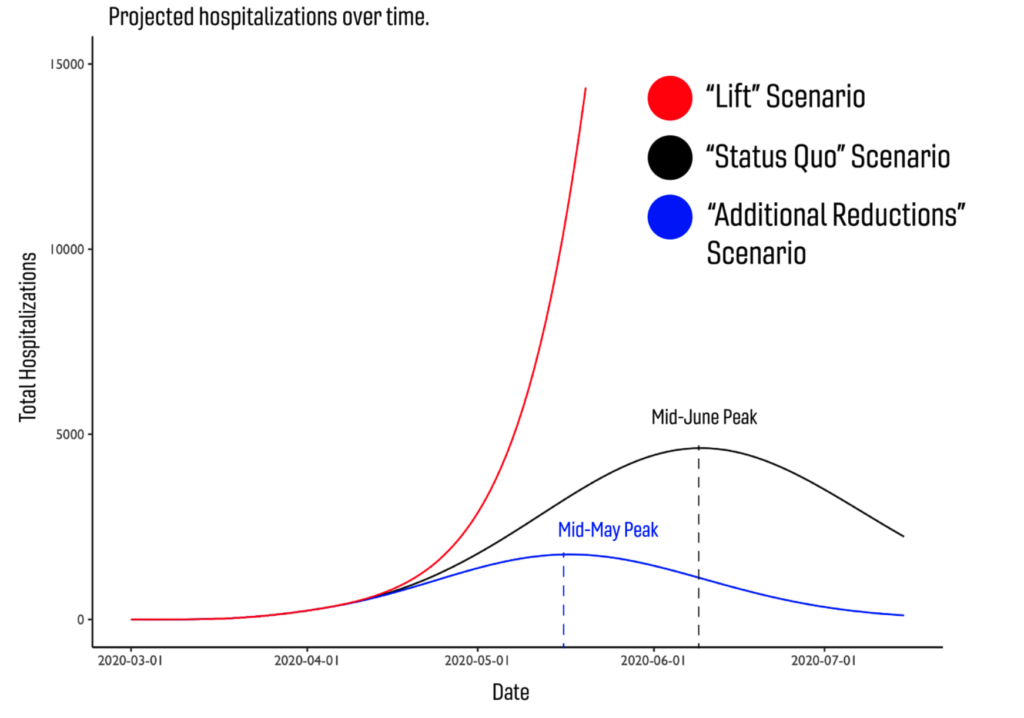
If Tennessee is going to avoid overrunning hospitals, residents will have to do an even better job of isolating themselves and preventing the spread of COVID-19.
Vanderbilt’s Department of Health Policy released its modeling Friday afternoon, which is some of the first projections based solely on Tennessee data.
More: Read the Vanderbilt University model.
A key factor in modeling the spread of the virus is the transmission from one person to the next. Before social distancing, every positive case in Tennessee was infecting another five people, researchers say. The Vanderbilt modeling shows that number is now down to 1.4.
But to turn back the outbreak, it would need to fall below 1 — meaning most patients spread the disease to no one else.
“You have to have a sustained period of time, with that number below 1, before which an epidemic can be suppressed,” says John Graves, health policy professor and lead author.
A closely watched state-by-state model, produced by University of Washington, does not include as much nuance about Tennessee. It also assumes the state will follow the trajectories of Wuhan, China, as well as Italy and Spain.
The Vandebilt model, meanwhile, does not attempt to predict deaths but instead focuses on hospital capacity. If the state were to remove all social distancing without widespread testing and contact tracing, it finds, 50,000 Tennesseans would be sick enough to need hospitalization all at once — substantially overwhelming hospital systems.
If the status quo transmission rate remains, the hospitalizations still wouldn’t peak until mid-June, with 5,000 people in the hospital.
“Even under the scenario where we stick to where we are right now, we’re really going to be stressing that hospital capacity,” says Melinda Buntin, director of Vanderbilt’s Health Policy Department.
The best-case scenario is a much smaller peak in mid-May. But people would have to become even more vigilant for that to happen.
The modelers insist that social distancing efforts need to continue or else the epidemic will quickly rage again. They note the modeling suggests the outbreak in Tennessee, which has now sickened nearly 5,000 confirmed cases and many more who were never tested, likely started with just 10 people who contracted the virus elsewhere and traveled here.

